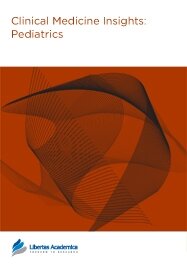

Publication Date: 30 Nov 2009
Type: Original Research
Journal: Clinical Medicine Insights: Pediatrics
Citation: Clinical Medicine: Pediatrics 2009:3 55-61

Background: Indians are suspected to have higher body fat percent at a given body mass index (BMI) than their western counterparts.
Objective: To estimate percent body fat in apparently healthy Indian children and adolescents by dual-energy X-ray absorptiometry (DXA) and explore linkages of BMI with body fat percent for better health risk assessment.
Methods: Age, weight, height of 316 boys and 250 girls (6–17 years) were recorded. Body composition was measured by dual-energy X-ray absorptiometry (DXA). High adiposity was defined as body fat percent (BF%) > McCarthy’s 85th percentile of body fat reference data. Receiver operating characteristic analysis (ROC) was carried out for CDC BMI Z score for it’s ability to judge excess fatness.
Results: High BF% was seen in 38.5% boys and 54.0% girls (p < 0.05). Percentage of obese children as defined by the BMI cutoffs of International Obesity Task Force (IOTF) (2.1% for boys and 6.9% for girls) was lower than that using Indian (13.7% for boys and 20.9% for girls) and CDC (14.1% for boys and 20.9% for girls) cutoffs. The point closest to one on the ROC curves of CDC BMI Z-scores indicated high adiposity at BMI cutoff of 22 at the age of 17 yr in both the genders.
Conclusions: Higher body fat percentage is associated with lower BMI values in Indian children.
PDF (590.11 KB PDF FORMAT)
RIS citation (ENDNOTE, REFERENCE MANAGER, PROCITE, REFWORKS)
BibTex citation (BIBDESK, LATEX)
XML
PMC HTML

The publishing experience in Libertas Academica journals is unique. Readers can feel satisfied that publications are peer reviewed. Authors follow simple steps to reach final stage of publication. All readers have access to articles. Journal subscriptions or medical library access is not needed.
Facebook Google+ Twitter
Pinterest Tumblr YouTube